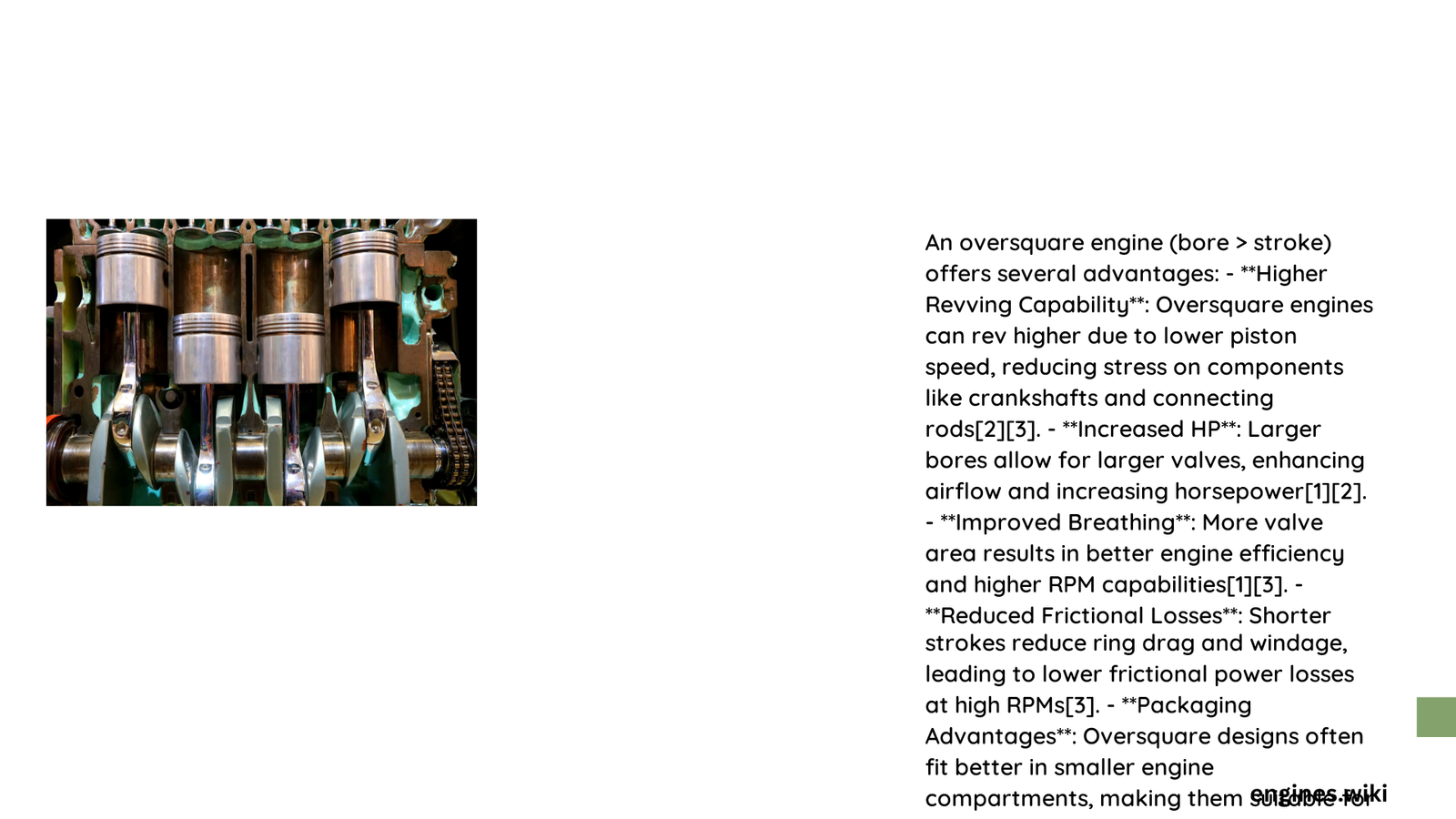Over square engines represent a pinnacle of automotive engineering, offering remarkable performance advantages through their unique bore-to-stroke configuration. These sophisticated powerplants deliver exceptional high-RPM capabilities, reduced mechanical stress, and optimized power generation by featuring a larger bore diameter compared to the piston stroke length. Engineers and automotive enthusiasts appreciate these engines for their ability to produce high power output, enable faster engine speeds, and provide compact, lightweight design solutions across various performance applications.
What Makes Over Square Engines Unique?
Over square engines, characterized by a bore diameter significantly larger than the stroke length, represent a sophisticated approach to internal combustion engine design. This configuration provides multiple performance and engineering advantages that set them apart from traditional engine architectures.
How Do Bore and Stroke Dimensions Impact Performance?
| Bore-to-Stroke Ratio | Performance Characteristics | Typical Applications |
|---|---|---|
| Over Square (>1.0) | High RPM, More Power | Sports Cars, Racing |
| Square (=1.0) | Balanced Performance | Passenger Vehicles |
| Under Square (<1.0) | Higher Torque | Trucks, Heavy Machinery |
What Performance Benefits Do Over Square Engines Provide?
- Enhanced RPM Capabilities
- Can achieve significantly higher engine speeds
- Reduced mechanical stress on moving components
-
Potential to reach up to 16,000 RPM compared to 8,700 RPM in square engines
-
Superior Power Generation
- Larger bore allows for increased valve area
- More efficient combustion chamber design
- Higher potential for power output per liter of displacement
Why Are Over Square Engines Preferred in High-Performance Applications?
Over square engines excel in scenarios demanding rapid acceleration and high-speed performance. Their design minimizes piston travel distance, reducing frictional losses and enabling faster engine response. Sports car manufacturers like Porsche and Ferrari frequently utilize this configuration to maximize power-to-weight ratios.
What Technical Advantages Emerge from Over Square Engine Design?
- Reduced Mechanical Stress
- Shorter piston travel reduces inertial forces
- Lower wear on engine components
-
Potential for lighter, more compact engine construction
-
Improved Thermal Efficiency
- Better heat dissipation through larger bore surfaces
- More uniform temperature distribution
- Enhanced combustion chamber geometry
Can Over Square Engines Maintain Fuel Efficiency?
Contrary to common misconceptions, over square engines can maintain reasonable fuel efficiency when properly engineered. While high-RPM operation increases fuel consumption, advanced technologies like direct injection and variable valve timing help mitigate efficiency challenges.
What Limitations Should Engineers Consider?
- Reduced low-end torque compared to under square engines
- Potentially higher manufacturing complexity
- Increased sensitivity to precise engineering tolerances
Conclusion

Over square engines represent a sophisticated solution for high-performance automotive applications, offering remarkable advantages in power generation, mechanical efficiency, and design flexibility. Their unique configuration continues to push the boundaries of internal combustion engine technology.
